15 Beginner-Friendly Plants for a Betta Tank
Posted by on 01/22/2024
Betta fish are awesome. If you've recently acquired one of these fish, or are looking to improve the appearance of your betta tank, then adding live aquatic plants is one of the best decisions you can make.
Live aquatic plants can improve your aquarium water quality, but hobbyists without a green thumb may be a bit intimidated by the thought of caring for live aquatic plants in addition to their livestock.
If you're looking to take on the challenge, you're in luck, because this post is geared towards beginners new to aquatic plant keeping. None of the plants on this list will require additional CO2 or intense lighting, but we do still recommend fertilizing your aquatic plants to keep them in tip-top shape.
January's Giveaways on Light Fish
Stem Plants
Stem plants are vertically growing aquatic plants that typically are placed in the aquarium background. Hobbyists will often propagate these plants by snipping the plant along the stem and replanting the cut portion. The bottom half of the plant will typically produce two off-shoots.
Shop 👉 Low Light Starter Plant Pack ($30) from GlassGrownAquatics
Water Wisteria
First up on our list is Water Wisteria. This plant is known for its lacey appearance and ease of care. If your tank is well stocked, this plant can utilize fish waste as a nutrient source. However, as the plant continues to grow, its leaves may turn yellow. If you notice yellow-colored leaves in Water Wisteria, it's a sign that it's time to add some liquid or dry fertilizers to your tank.

Pearlweed
This plant has received its common name "Pearlweed" for a reason. It's a medium-to-fast-growing plant that's often used by hobbyists for its versatility. When trimmed frequently, the plant can serve as a carpeting plant, but hobbyists who aren't up for frequent trimmings can enjoy the plant as a background plant. When left unattended, this plant will grow to eventually reach the water's surface.
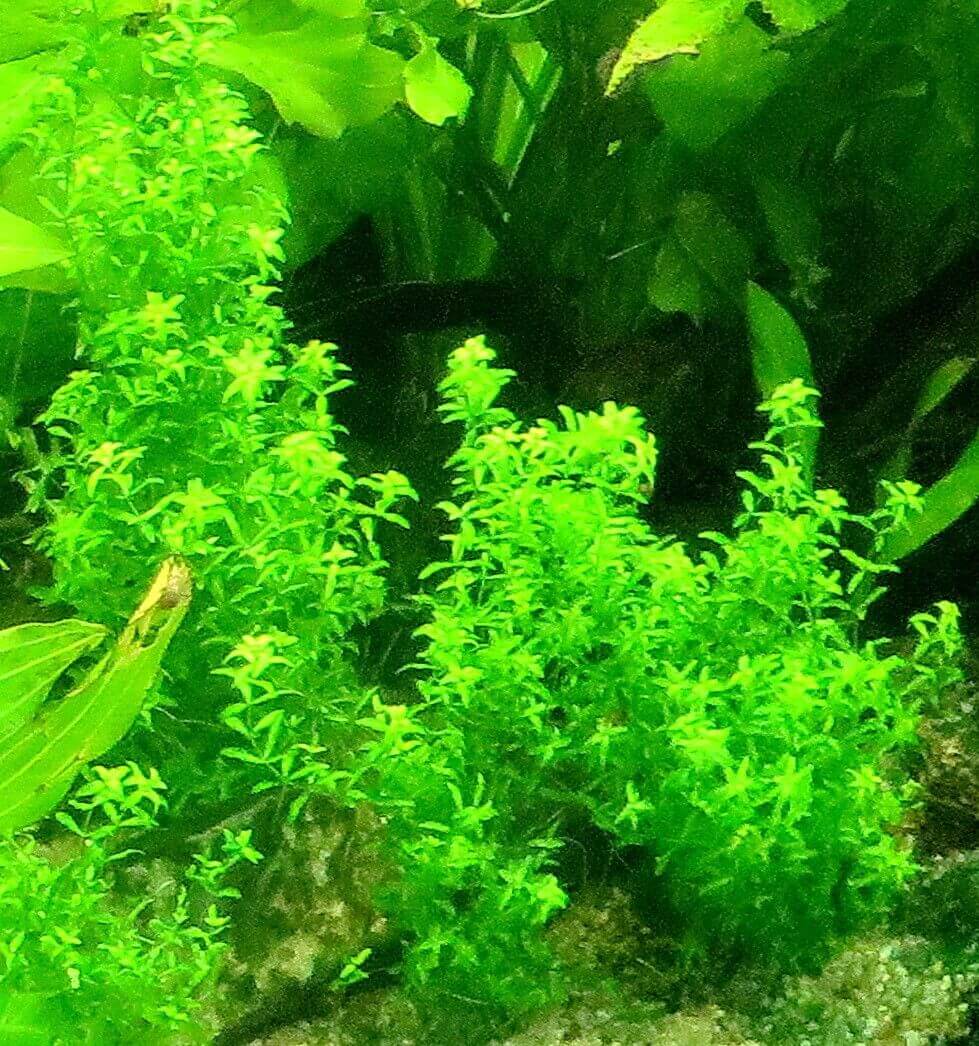
Rotala sp green
Rotala sp. Green is a classic aquarium plant, known for its bright green coloration. It's one of the most popular aquarium background plants in the hobby, but beginners should be aware that most of the photos on the internet showcase the plant in a CO2-injected tank.
Hobbyists who don't have a CO2 system will be able to keep Rotala sp. Green alive, but the growth rate will be much slower, and colors may appear less vibrant. If you think you might eventually upgrade your aquarium setup, then Rotala sp. Green is a great choice
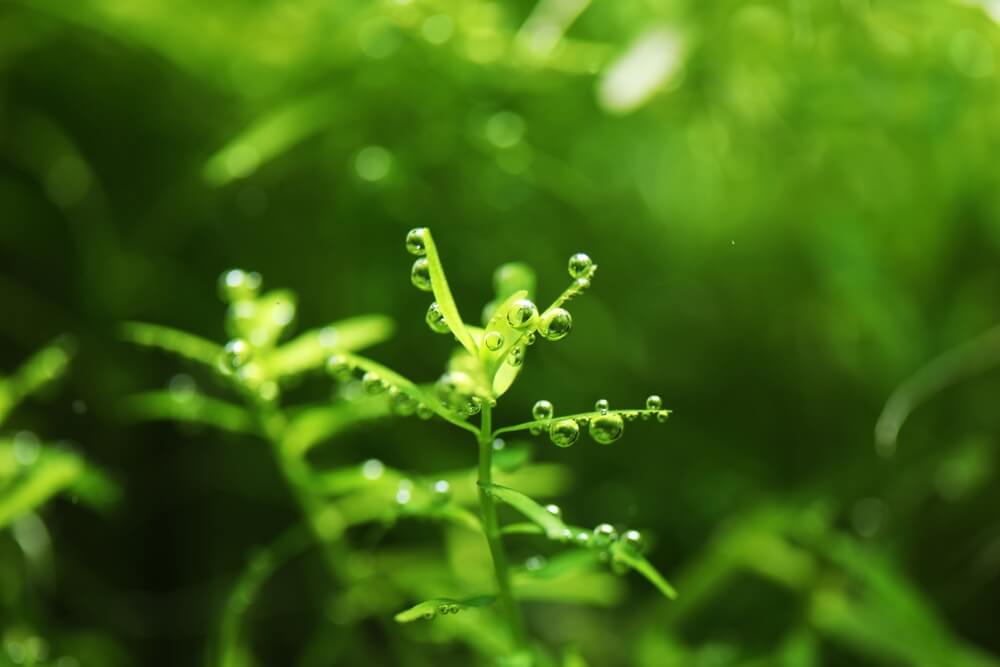
Ludwigia repens
Hobbyists with larger tanks will appreciate Ludwigia Repens, a plant known for its vertical growth. While this plant will not produce the compact growth seen in species of Rotala, Ludwigia is a fast-growing stem plant with orange, gold, and red-colored leaves.
Hobbyists without CO2 may see leggier growth, and will likely need to dose Iron if they want to bring out some of the red coloration seen in the plant.
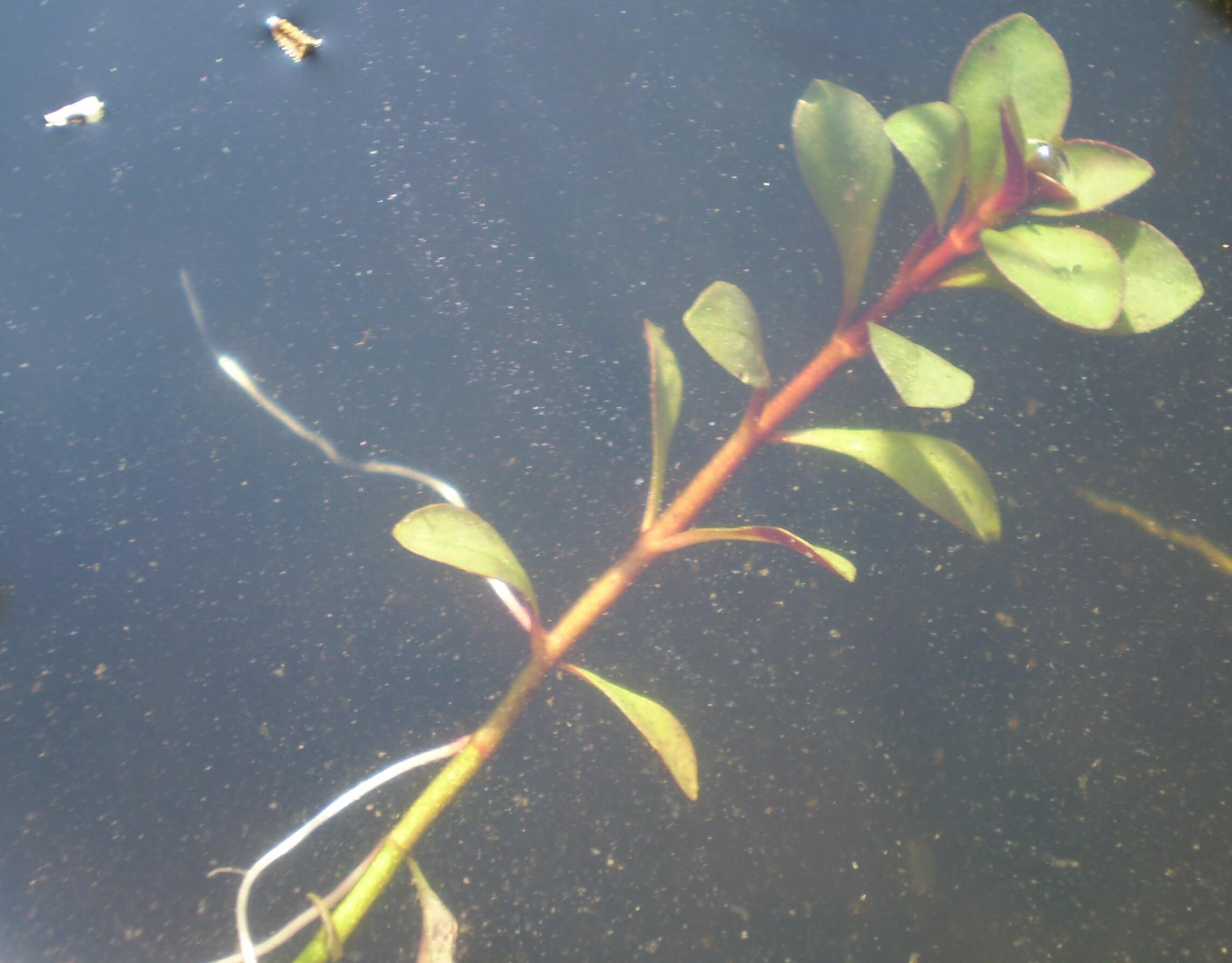
Anacharis
Also referred to as the Brazilian Waterweed, Anachris (scientific name: Egeria Densa) is a unique stem plant. When properly cared for, the plant will grow many leaves, and when combined with frequent trimmings, can quickly cover the background in an aquarium.
Hobbyists will appreciate the plant's dark green colors, which it can readily produce without CO2 infection.
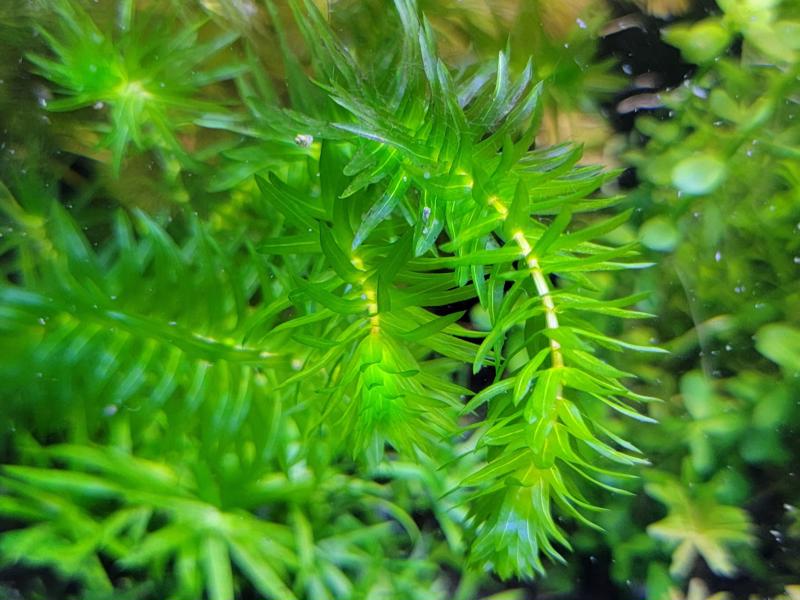
Hornwort
Hornwort (scientific name: Ceratophyllum demersum) is an aquarium staple. We've featured this plant on our list of Best Aquarium Background Plants, and it's for good reason. This plant is a fast-grower, and will even grow quickly when floated directly in the tank!
Experienced hobbyists will often use the plant as a nutrient soaker, keeping competing algae at bay. The plant has needle-like leaves, and hobbyists will want to keep an eye on their filter intakes to ensure any disconnected leaves don't restrict water flow throughout the tank.
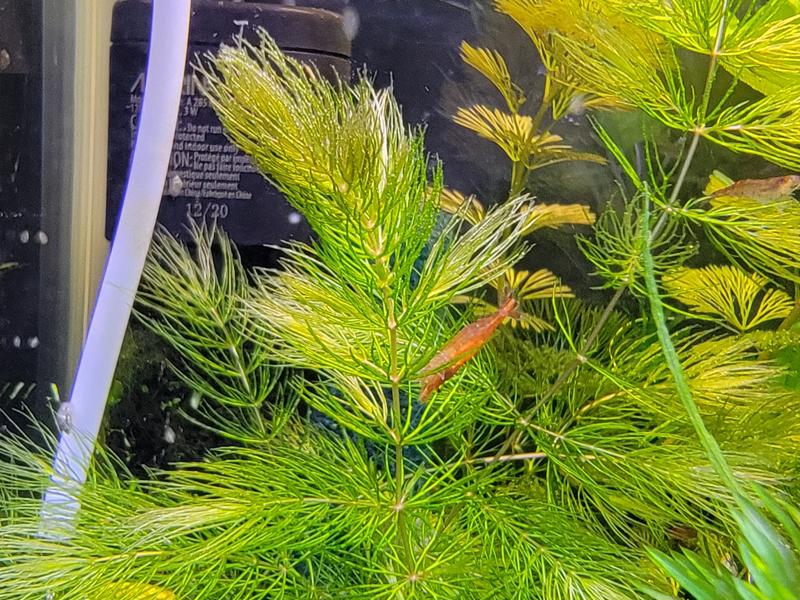
Rhizome Plants
The key to rhizome plants is ensuring that their stems are not submerged beneath the aquarium substrate. Rhizome plants pull nutrients directly from the water column, and as such require their roots to be exposed.
Hobbyists will often attach these plants to driftwood using a clear fishing line. Over time, the plant's roots will wrap around the aquarium hardscape, anchoring them in place.
Bolbitis
Bolbitis is probably one of the more unique rhizome-based plants on our list. Its appearance more closely resembles the previously mentioned Water Wisteria. Native to West Africa, the plant is known to be a slow grower. So hobbyists should plan to care for this plant for quite a while if they're looking for it to cover a particular area of their tank.

Anubias Barteri
Anubias is one of the most recommended plants for beginners. The species is so common that hobbyists can even pick up this plant at some of the larger US-based pet stores, such as PetSmart and Petco.
Anubias is a slow grower, with broad leaves that point horizontally, creating a unique canopy for your tank inhabitants. The plant will grow to about 14 inches in height.
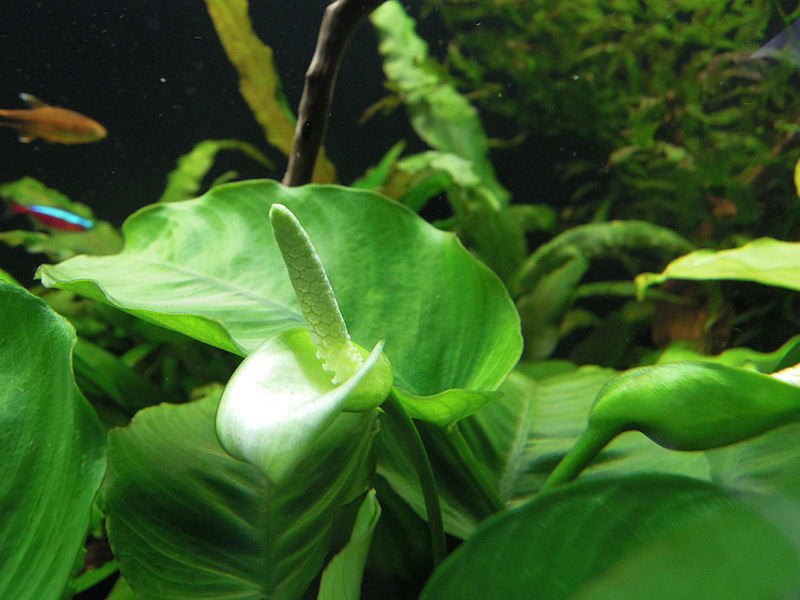
Java Fern
Equally as popular as Anubias is the Java Fern. The plant produces large, narrow leaves that grow vertically from the plant's rhizome. The plant is easy to take care of, but hobbyists should be aware that if the plant is stressed, its leaves will turn yellow. Once the leaf begins to change color, it can no longer be repaired, and hobbyists will have to trim the leaf at the base of the plant to remove it.
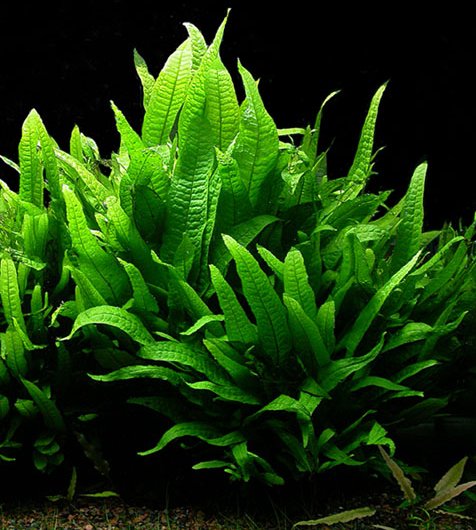
Anubias Frazeri
Next up is Anubias Frazeri. This plant closely resembles the previously mentioned Anubias plant but with one distinct difference. The plant has much more narrow leaves when compared to the rounder-shaped leaves seen in Anubias.
Just like the related Anubias plant, Anubias Frazeri is an undemanding, slow-growing plant that's perfect for beginners and betta tank owners.
Read More: Anubias Frazeri: Care, Planting, Maintenance & More
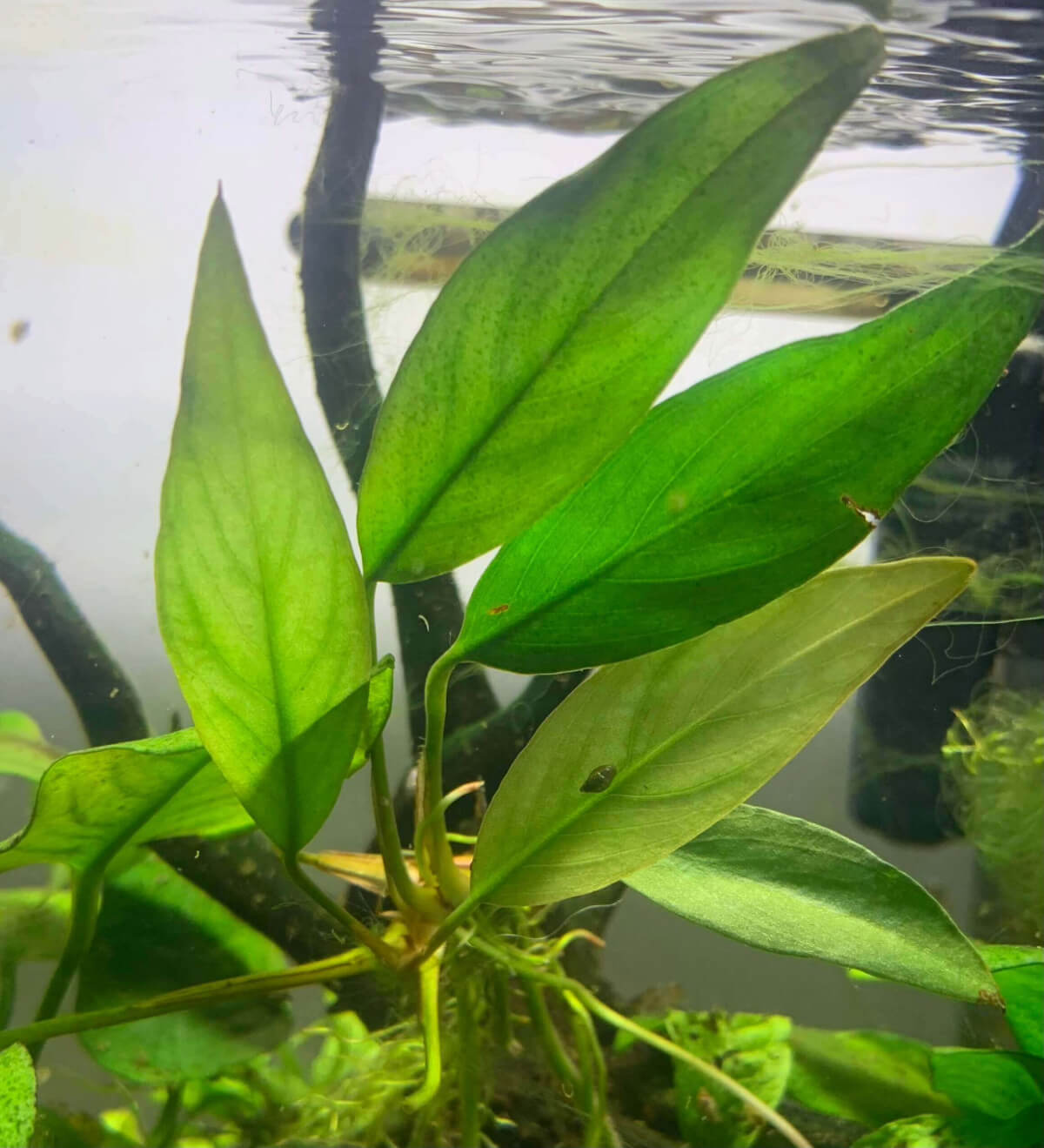
Anubias Nana Petite
Last on our list of rhizome-based plants is Anubias Nana Petite. Unlike Anubias Barteri, Anubias Nana Petite is much smaller in size, only growing to about 5-8 inches. The plant displays beautiful dark green rounded leaves that look excellent in an aquarium foreground.

Floating Plants
Floating plants are a great addition that all Betta Fish will appreciate. These plants can quickly cover the surface of your tank, and most are relatively easy to care for.
The one thing you'll want to be aware of is condensation. If your tank has a lid, water can drip from the lid onto the top of your floating plants. Over time, this can result in moldy dead floating plants. If your tank has a lid, then it may be best to stay clear of floating plants.
Red Root Floaters
Red Root Floaters are some of the most gorgeous floating plants seen in the hobby. As you may have guessed, Red Root Floaters have red roots that look fantastic in an aquarium filled with bright green plants.
Red Root Floaters are easy to care for, and hobbyists will love all this plant has to offer. One thing to be aware of is that the leaves of the plant will change based on light intensity. Less intense lighting produces green coloration, while powerful light fixtures and limited nitrate can produce a deep red color. In both cases, the roots of the plant will still be red.
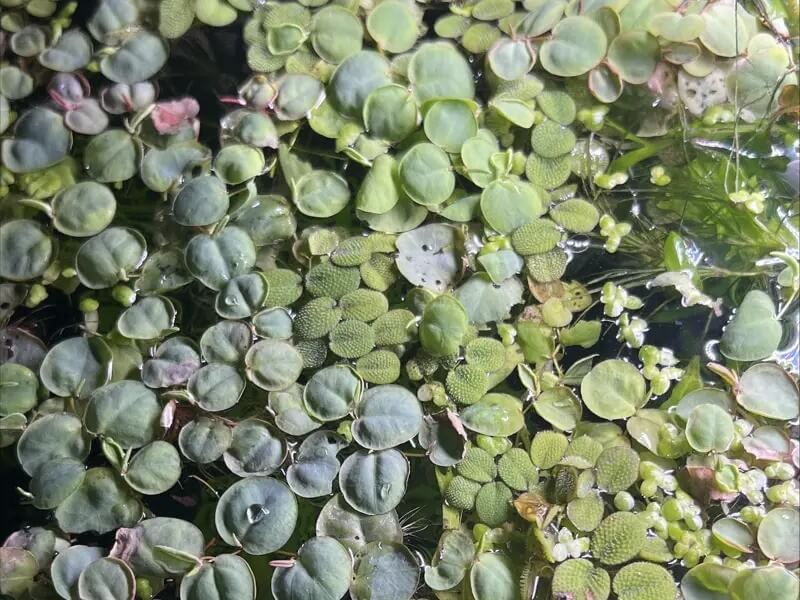
Water Lettuce
In the wild, Water Lettuce is considered an invasive species. The plant is incredibly hardy and can survive even in cold climates. The plant looks quite beautiful in an aquarium, with its thick, fuzzy leaves that closely resemble a head of lettuce.
The plant is almost effortless, and hobbyists will need to do little to care for the species. If the plant requires additional nutrients, its leaves will begin to turn yellow, and eventually decay.

Frogbit
Hobbyists and betta fish lovers will likely appreciate the appearance of Frogbit. This floating plant produces round, lily-pad-like leaves, which will grow quickly in an aquarium. The leaves grow to about an inch in diameter, and the plant is often added to ponds for its beautiful emerald-green appearance.
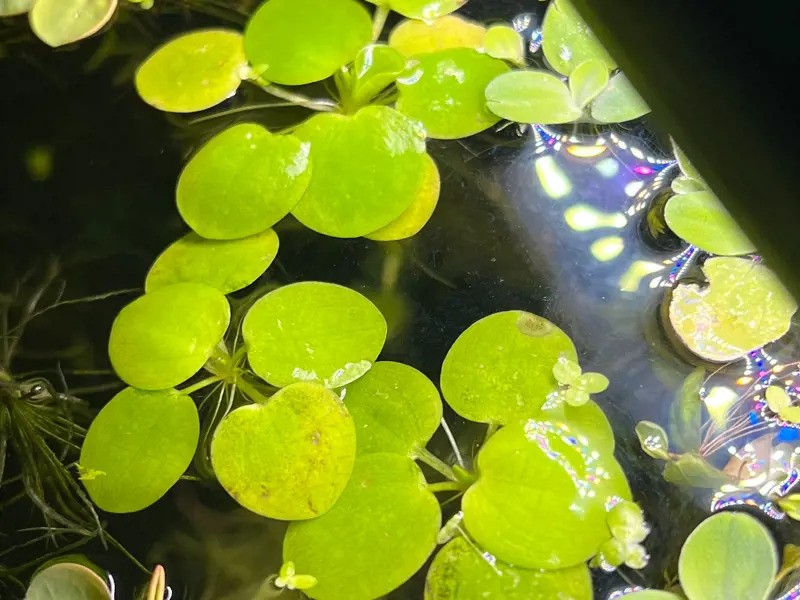
Salvinia Minima
Similar in size to Frogbit is another popular floating aquarium plant known as Salvinia Minima. Also referred to as Water Spangles, the plant's leaves have a unique fuzz-like texture to them. Native to South America, the plant's leaves will grow to be about .75 inches in diameter.
Interestingly, a related plant, Salvinia Auriculata is almost identical to Minima, the only difference being the arrangement of the fuzz-like hairs on the surface of the plant's leaves.
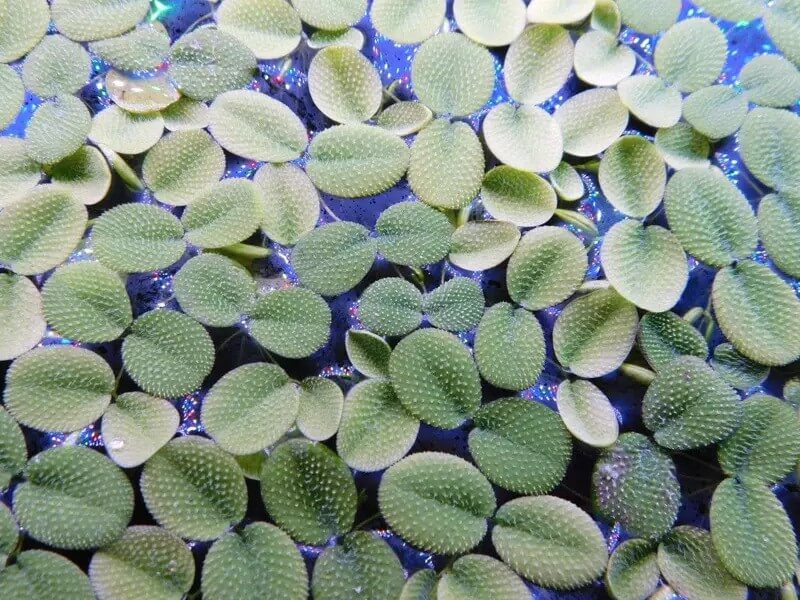
Where to Purchase
We've seen a lot of these plants for sale from hobbyists on our marketplace.
If you can't find what you're looking for, we've built a massive list of over 250 different online aquarium stores to help you in your search.
Conclusion
That wraps up our list of beginner-friendly plants for your betta tank. We guarantee your betta fish will love the addition of any of these aquatic plants. Not only do they look great, but these plants will also keep your aquarium water in pristine condition.
Do you have a favorite aquarium plant that didn't make the list? Let us know in the comments, and be sure to visit our marketplace where you can buy and sell directly from other hobbyists.
January's Giveaways on Light Fish


